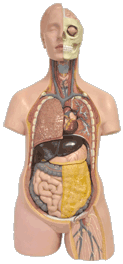At WiseGEEK, we're committed to delivering accurate, trustworthy information. Our expert-authored content is rigorously fact-checked and sourced from credible authorities. Discover how we uphold the highest standards in providing you with reliable knowledge.
What is the Ligamentum Flavum?
The ligamentum flavum is a paired vertical ligament extending between adjacent spinal vertebrae. Its name is Latin for “yellow ligament,” and this band of elastic fibrous tissue helps maintain posture when a person is sitting or standing upright. Situated posterior to the bodies of the vertebrae but anterior to the spinous processes of the vertebrae, which are the bony prongs angling downward off the back of each vertebra, the ligamenta flava form two parallel, united vertical lines inside of the vertebral canal. These extend from C2, the second cervical vertebra, all the way to S1 of the sacrum, the stacked bone at the base of the spine in the pelvis.
On its upper end, each ligamentum flavum attaches to the underside of the lamina of the vertebra above it. The laminae are the paired horizontal projections of bone that form two bridges spanning the space between the pedicles on either side of the vertebral body and the spinous process behind it. They extend from the pedicles, each a bony process jutting backward off either side of the body of the vertebra, and angle toward the midline of the spine, fusing in the middle. In doing so, they form a widened “V” that surrounds the posterior aspect of the spinal canal.

Stretching downward a short distance from the lamina above, the ligamentum flavum attaches its lower end to the upper surface of the lamina below. Along the ligament’s outside aspect, it joins with the roots of the articular process, the paired bony protrusion found sticking out from either side of each vertebra where the lamina meets the pedicle. The front aspect and inner aspect of the ligamentum flavum face the spinal canal, the enclosed vertical channel where the vessels of the central nervous system pass through the spine. Its rear aspect is flush with the spinous process behind it, with the paired lateral portions of the ligamentum flavum essentially uniting in the middle to form the same “V” of the laminae when viewed from above.
Increasing in thickness as they descend from the cervical portion of the spine to the lumbar portion, the ligamenta flava are dense with elastin fibers, built to resist compressive forces on the spine and maintain an upright posture. In addition, this elasticity preserves the integrity of the posterior wall of the spinal canal so that ligamentum flavum does not push forward into its segment of the spinal column when the spine is in extension. Lastly, this connective tissue aids the muscles of spinal extension in returning the spine to neutral posture following spinal flexion, the action of bending forward.
AS FEATURED ON:
AS FEATURED ON:










Discuss this Article
Post your comments